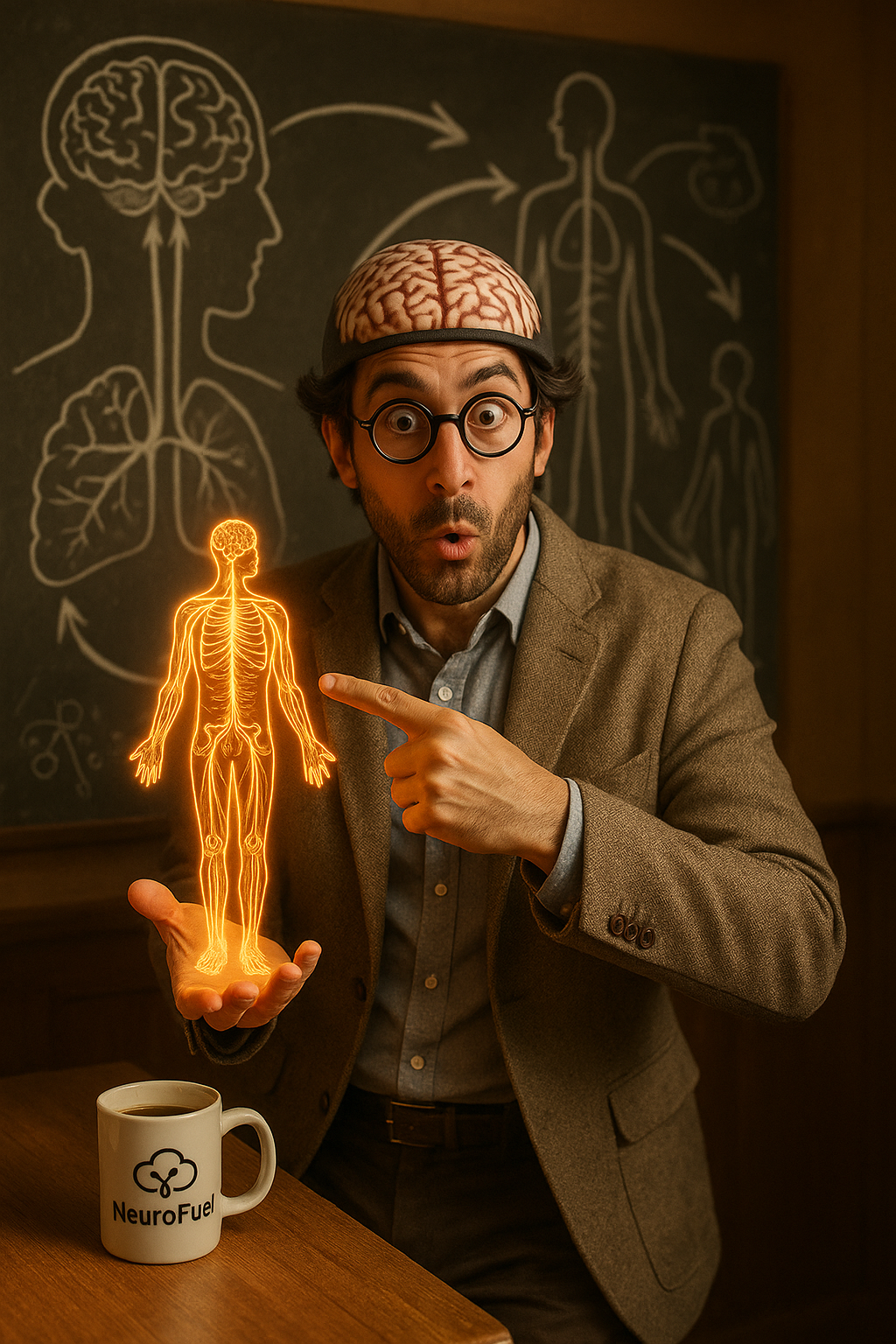IN THIS LESSON
Where Direction Becomes Meaning.
Every thought you have ever had, every decision, sensation, instinct or inspiration, has moved through you not as a lightning bolt, but as a flow. The nervous system does not shout; it conducts. From brain to body and back again, information travels in elegant waves, layered circuits, and recursive dialogues. To understand this movement is to understand how humans translate abstraction into action, and perception into presence.
We do not walk around with raw neural data in our heads. What arrives in the brain from the periphery is already shaped, filtered, and meaningful. Likewise, when the brain commands the body, it doesn’t do so by brute force, it conducts a choreography, encoded in descending signals refined through spinal hubs, brainstem gates, and simulated corrections from the cerebellum. The entire architecture of the nervous system, ascending and descending, central and peripheral, is built not just to move information, but to sculpt it into awareness.
This chapter maps the path of that flow, from reflex to reflection, from breath to belief. It is a journey through the anatomy of cognition, tracing how survival machinery evolved into sapient complexity. And by the time we arrive at the cerebrum, where action and abstraction meet, we begin to see what makes us human, not in our size, or speed, or strength, but in the strange, recursive loop of mind that dares to ask: what am I doing, while I am doing it?
Listen up.
Your nervous system is not a one-way street; it is a living conversation between body and brain. What your body senses rewires what your brain believes, often before you even notice it.
-
Books
Eric Kandel – In Search of Memory
A personal and scientific journey into how the brain processes and stores information, from neurons to consciousness.David Eagleman – Livewired: The Inside Story of the Ever-Changing Brain
An accessible look at how the brain adapts, rewires, and flows with experience and sensation.Antonio Damasio – The Strange Order of Things
Explores how body signals shape emotions, consciousness, and brain evolution—ideal for understanding "bottom-up" processing.
Courses & Interactive Tools
HarvardX – Fundamentals of Neuroscience (edX)
edX.org
Great for structured lessons on the central/peripheral nervous system and neuronal pathways.BrainFacts.org – Explore the Brain Map
brainfacts.org
A visual, interactive tool showing parts of the nervous system and their functions.Human Brain Project – EBRAINS Atlas
ebrains.eu
Zoom into mapped structures of the CNS and track how they interlink with cognition and behavior.
Podcasts & Videos
Huberman Lab Podcast – Episodes on Sensory-Motor Loops
Explains ascending and descending pathways in practical, performance-based contexts.Neuroscientifically Challenged – 2-Minute Neuroscience: Ascending and Descending Pathways
Bite-sized explainer videos on the basics of nervous system information flow.BBC’s The Brain with David Eagleman (Documentary Series)
A cinematic and science-based introduction to how brain-body information shapes our sense of self.
Discussion & Community
Reddit – r/Neuro and r/Neuropsychology
User-led discussions, resource sharing, and direct Q&A on central/peripheral systems and signal pathways.Neurostars.org
Ideal for academic questions, research collaborations, and peer insight into neuroanatomical research and modeling.
